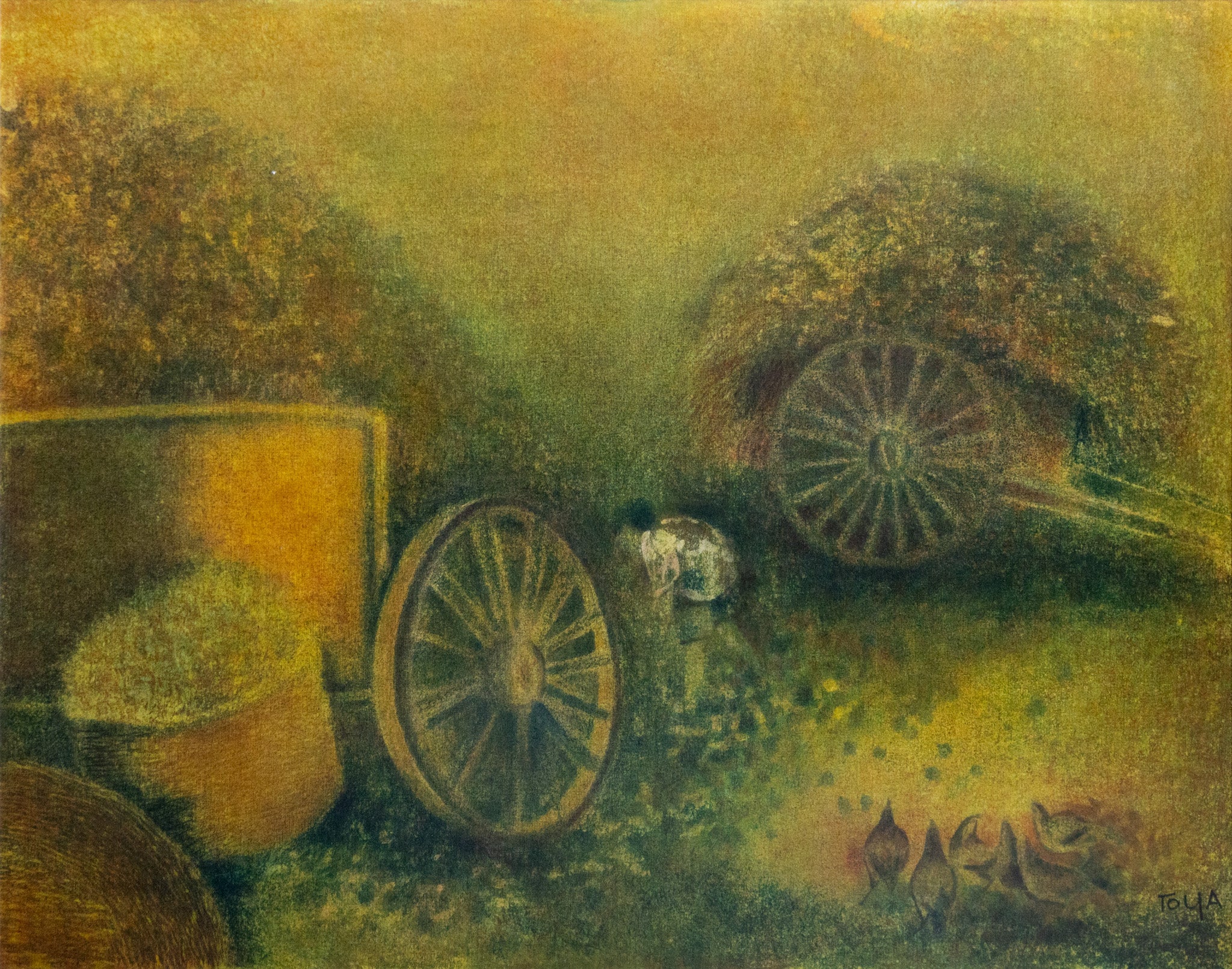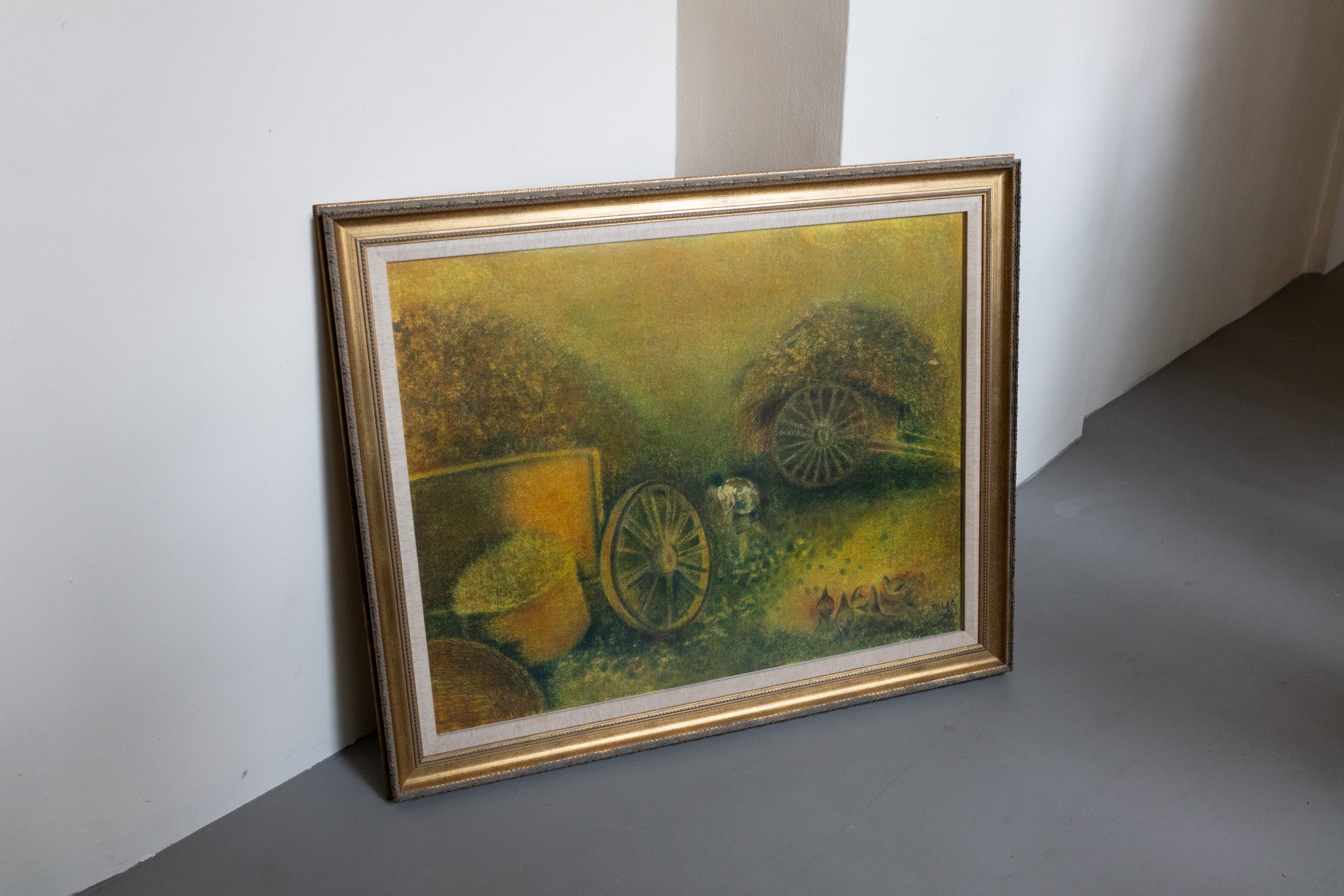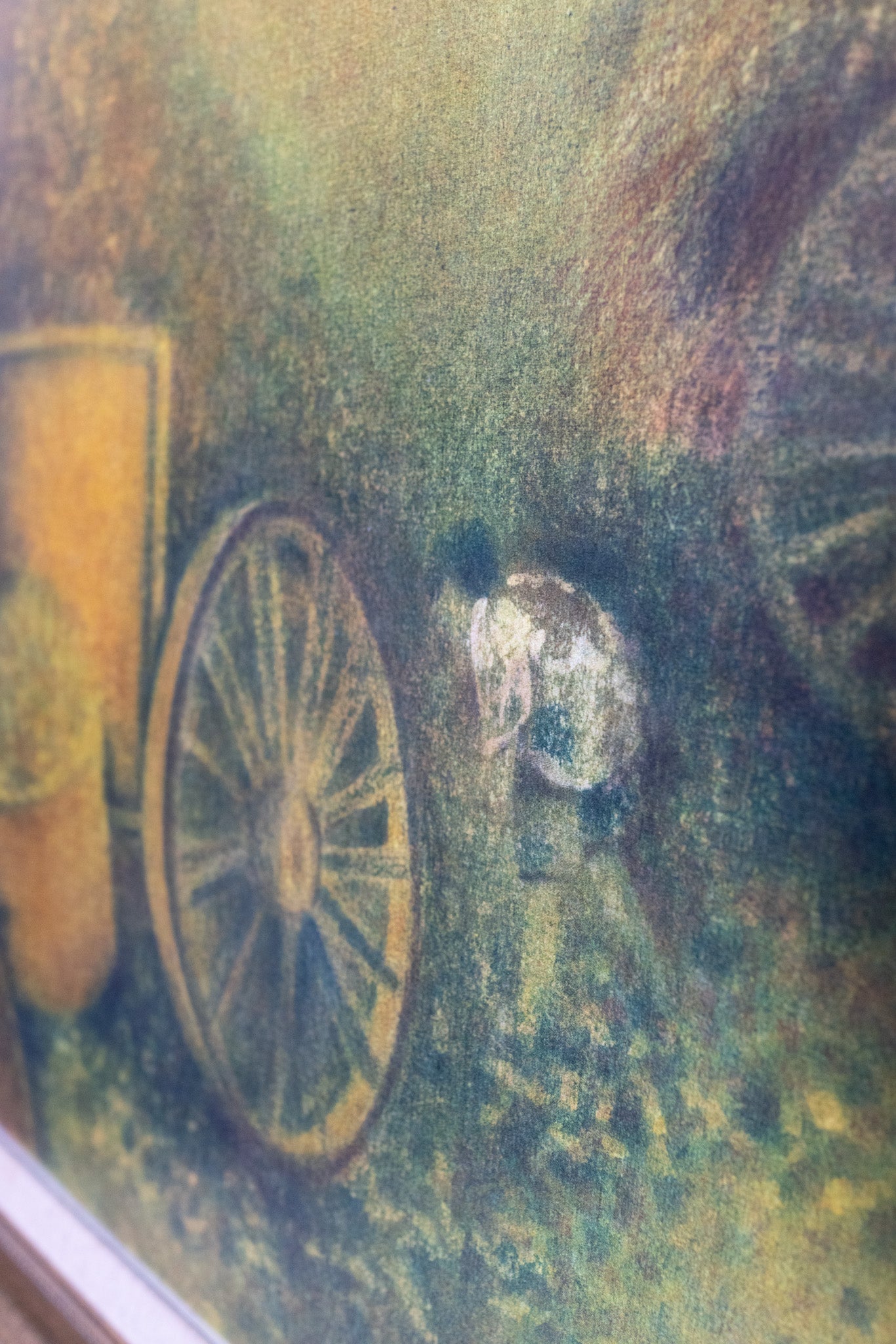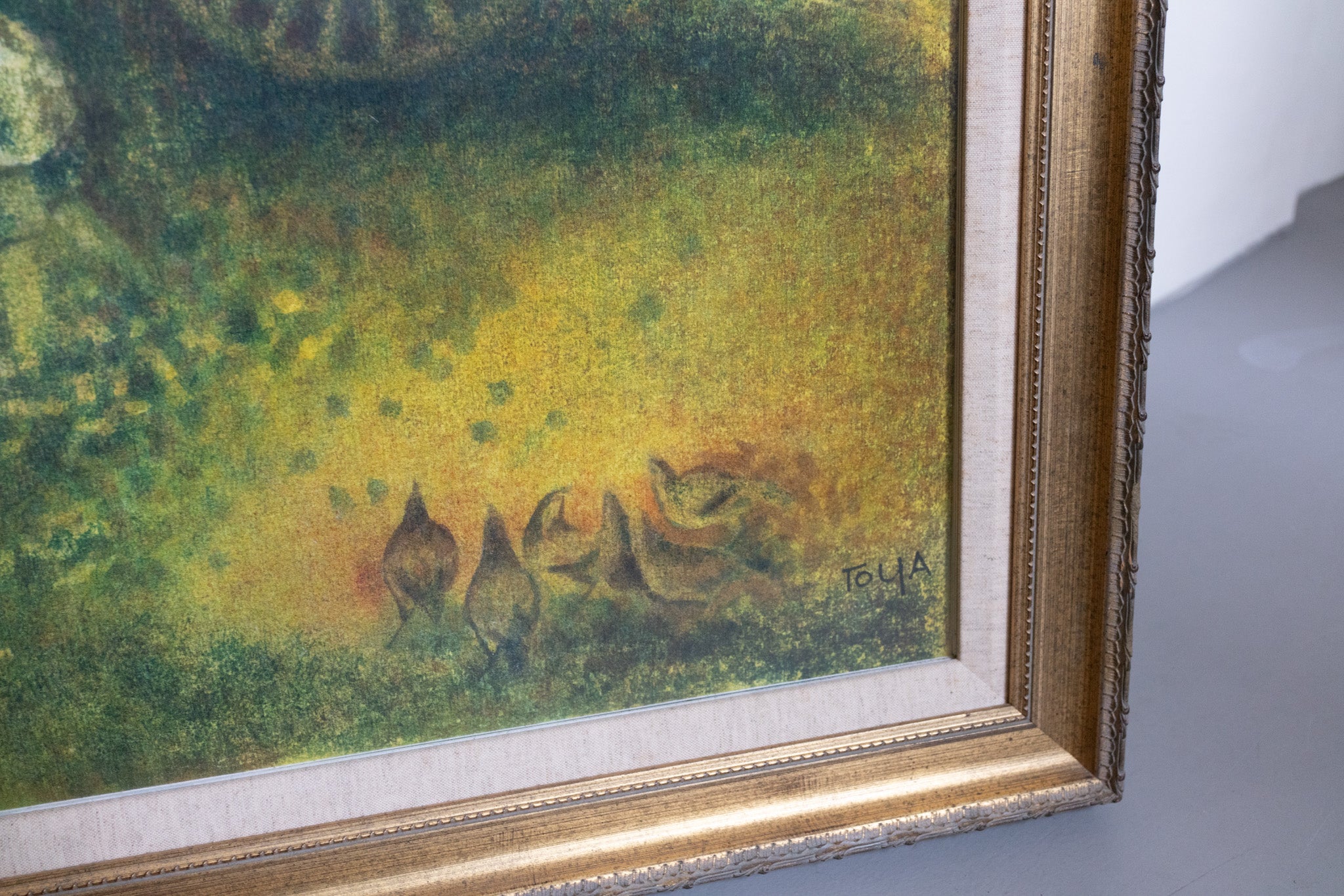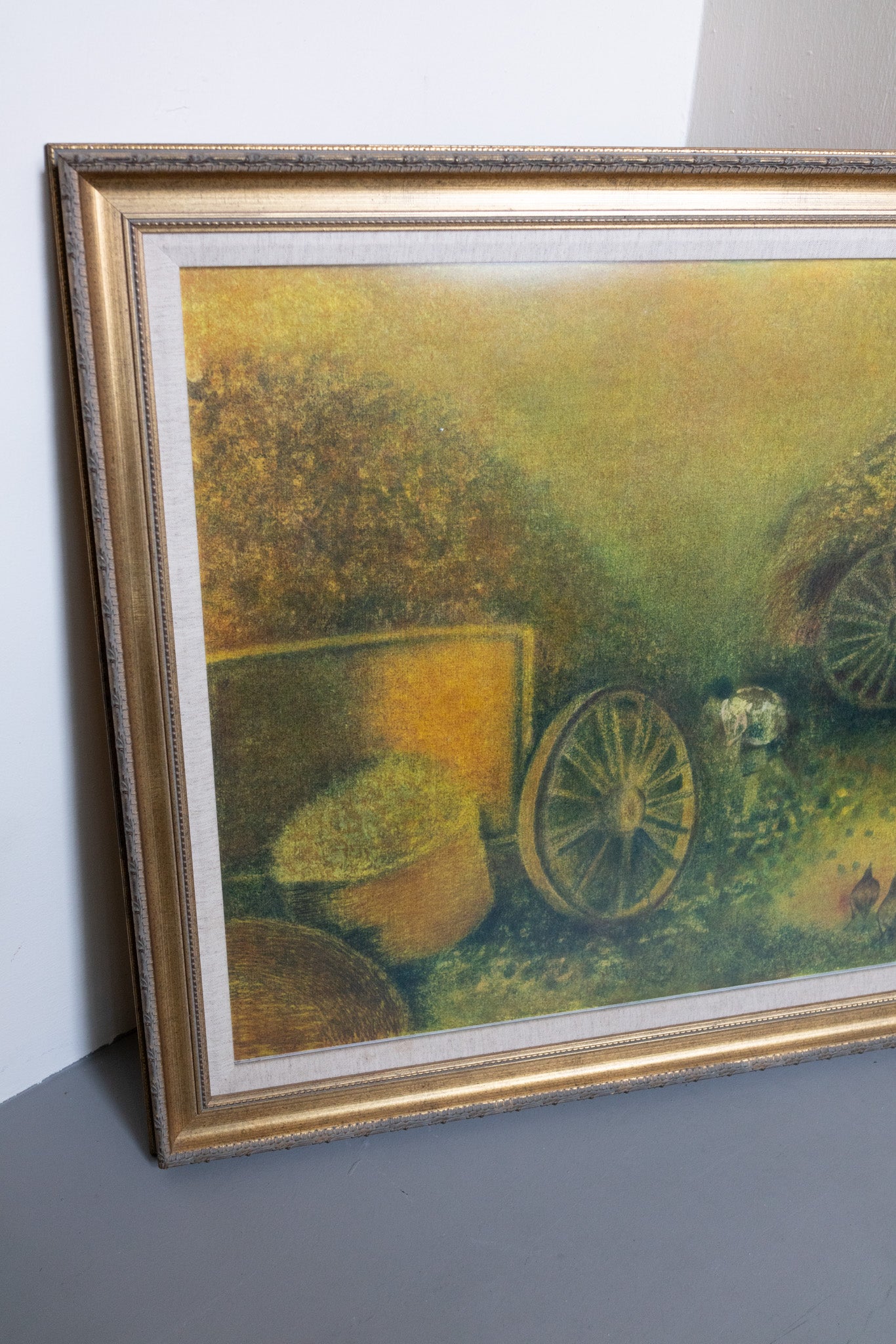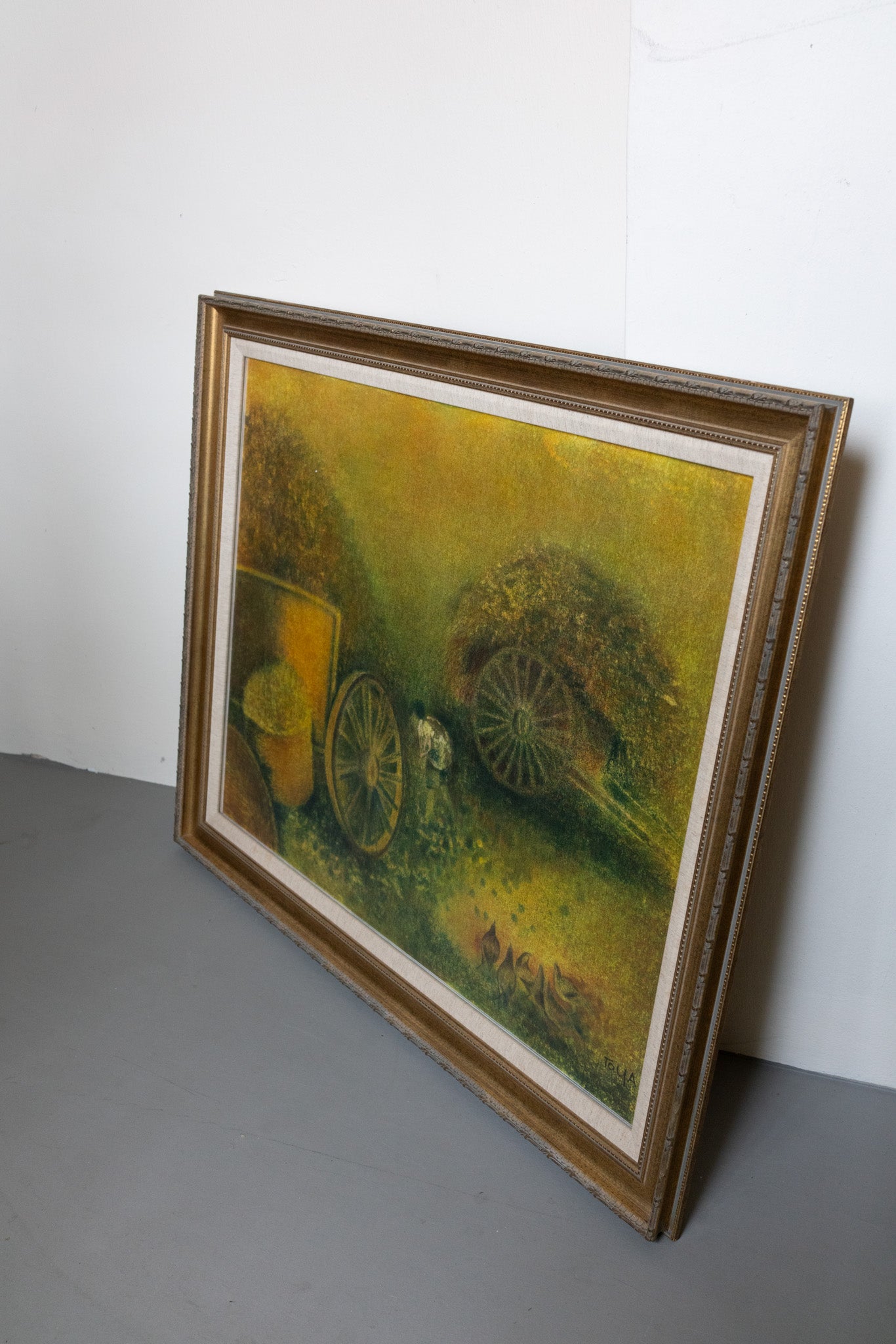Toya Lim Khoon Hock, Bullock cart, 1996
Wax and dye on cloth
68 x 86 cm (visible), 80 x 98 x 5 cm (framed)
Condition: Very good
-
Toya Lim Khoon Hock (Malaysian, 1943–2016) was a Penang-born artist whose work was deeply rooted in the landscapes and traditions of his homeland. Raised amidst dense wilderness and plantations, he was first exposed to batik painting as it gained prominence in the 1960s. Though he initially aspired to be a fashion designer, his family’s financial constraints steered him towards a more practical, business-minded approach to art.
Toya apprenticed under renowned batik master Chuah Thean Teng (Malaysian, 1912–2008) and later took over a commercial batik factory. While this venture made materials more accessible to him, it also left him with little time for his own artistic pursuits. However, extensive travels in the 1970s and 1980s—particularly to London and Australia—introduced him to the works of Claude Monet (French, 1840–1926) and Georges Seurat (French, 1859–1891), whose Impressionist techniques fascinated him. Toya became determined to translate their approach into batik, developing a method that minimised crackles and emulated the seamless light and texture of their paintings.
His batik process was meticulous and physically demanding, relying on intricate layers of tiny dotted dyes. Unlike traditional batik, his technique was nearly lineless, creating a softer, more atmospheric effect. He was deeply passionate about batik’s heritage and dedicated much of his life to refining its expressive potential, treating it as both a technical challenge and an artistic philosophy.
Toya’s subject matter rarely strayed from rural life—farmers, wooden huts, and quiet landscapes, rendered in a distinctive palette. His works, often in hues of burnt carmine, pale sage, olive green, and cerulean blue, were created using only red, blue, and green synthetic dyes, which he meticulously mixed to achieve his desired tones. He viewed batik as an alchemical process, with yellow hues imparting a sense of nostalgia and warmth.
Before his passing in 2016, Toya expressed his belief that his work should only belong to those who truly appreciated it. His batik paintings, with their quiet depth and unwavering connection to tradition, remain a testament to his vision. In a rapidly modernising world, they serve as a reminder of the beauty found in patience, heritage, and sincere craftsmanship.
Literature:
Bridget Tracy Tan (ed.), Idyllic Canting: Toya’s Batik Art, Nanyang Academy of Fine Arts, Singapore, 2006. (illustrated, p. 49).
(Photographed in March 2025)
